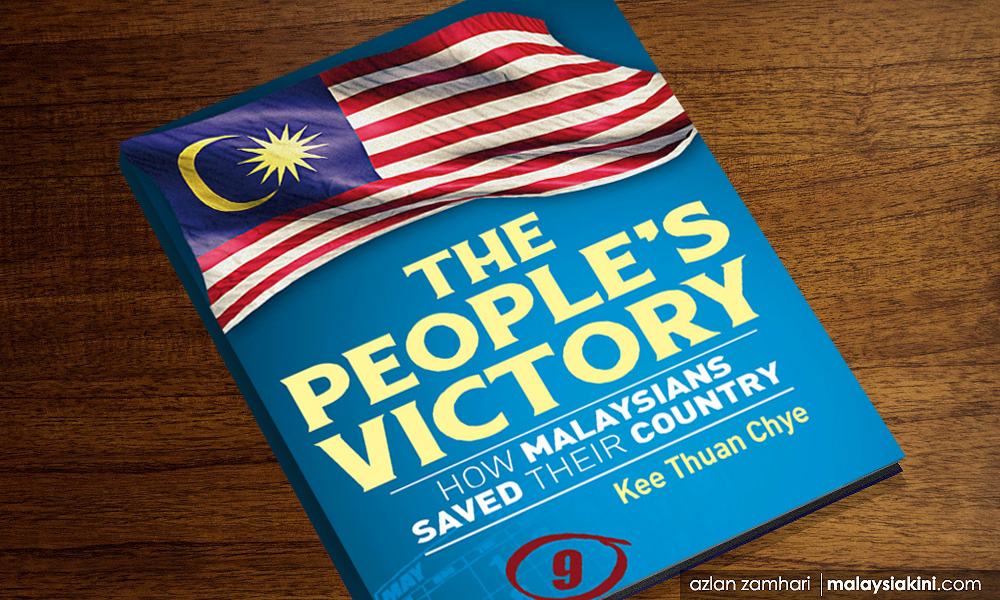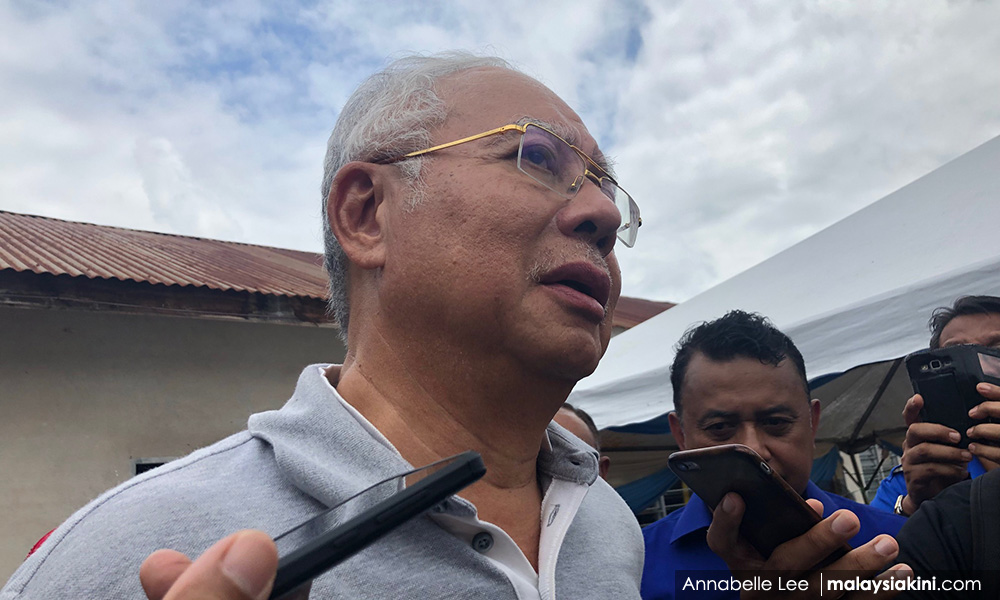BOOK REVIEW | Kee Thuan Chye finished his latest book, The People’s Victory: How Malaysians Saved Their Country, just after the conclusion of the 14th general election.
The People’s Victory is about the long process of popular political activity, leading from the aftermath of the 2008 election, through the 2013 election, to the swearing-in of Dr Mahathir Mohamad as prime minister on May 10, 2019.
In 2013, the election was won by BN, while then-opposition coalition Pakatan Rakyat won the majority of the popular vote and the youth vote. The election was conducted on the basis of an egregious gerrymander in favour of BN, and was widely said to have been marked by all manner of fraud.
Anwar Ibrahim, out of jail at the time, organised a large number of hugely-attended rallies at various locations (as he had assisted Bersih in organising rallies prior to GE12 from a cell), doing much to engender the popular movement for change in 2018.
The subsequent path to GE14 was not smooth, what with the jailing of Anwar for a second time, the withdrawal of PAS from Pakatan Rakyat, BN's persistent actions to divide Malaysians along racial lines, the decision to hold the 2018 elections in the middle of a week, and BN’s use of its control of the Treasury to attempt to buy electoral support.
The author's account of the years between GE13 and GE14 makes for a good read. In fact, it reads like an adventure tale. Readers learn of complex manoeuvres and counter-manoeuvres on the part of a host of political figures.

We learn of the abandonment of Pakatan and the creation of another coalition, Pakatan Harapan, and subsequently of the rebuttal of the protagonists' attempts to secure in time the registration of Harapan in its own right (at this stage, I have to remark that the book is sadly without a glossary).
We read of the coalition’s adoption of Mahathir as its candidate for prime minister again after GE14 – at least until Anwar would be pardoned and is able to win election to Parliament – and of the misgivings held by many about resurrecting Mahathir, the person many regard as having been responsible for the undermining of democracy and human rights in Malaysia in the first place.
We learn of the gracious offer to Mahathir of olive branches by Anwar and the much-abused Tian Chua, indicating that they saw it as being for the greater good at that moment that Mahathir be the opposition's candidate for prime minister.
We learn of the tremendous generosity of Dr Wan Azizah Wan Ismail in being seen as temporarily in the place of her husband and of her presence of mind in obtaining the king's assurance that he would pardon her husband.
Malay tsunami?
We learn, too, of the Najib Abdul Razak administration successfully repeating the electoral malapportionment of 2013. Finally, we learn of the concerted efforts to bring Najib to court to face charges for financial crimes and corruption.
On the back of the discrediting of the then-premier, and despite the gerrymandering and all sorts of tricks, BN lost GE14 resoundingly.
I was hoping for more than a tale of adventure though when I began to read The People’s Victory.
Although we are told of divisions within the leadership of Malay organisations, and of efforts by the Malay elite to preserve their benefits under the New Economic Policy, I would have liked to learn more of the feelings of the Bumiputera between GE13 and GE14.
It cannot be said that there was a Malay tsunami in favour of Harapan (as it may be said that there was a Chinese tsunami against the government in 2013).
Did the rural Malays involve themselves in the elections? What themes were deployed in trying to secure the defection of Malay youth from Umno-BN?
What misgivings were expressed by the Bumiputera about the federal government’s policies, about Umno’s representation of Bumiputera interests, about the claims and later evidence of Najib’s malfeasance, corruption and possible criminality, and about the widening portrayal of the Malaysian government as a kleptocracy?

The People’s Victory is, I would say, a very Chinese book in the end.
Moreover, there is a strong suggestion that governments come and go, and deals are made simply as agents determine, in accordance with their strategies and capacities.
In fact, though – and I say this as a political economist – agents act in a setting of structures. For example, there are important structures of ownership of technologies which in turn influence investment structures.
We learn almost nothing about the way that Malaysian political movements in the recent past have addressed such structures, or about what changes of economic structure were canvassed in GE14.
I am not talking about the institutions of access to education, health, or income support, but of structures such as the increasingly regional production and trading patterns of Japanese keiretsu.
I am talking about how the then-opposition addressed and the present government will go on to address the international pressures to limit the oil palm industry (including efforts to limit further clearing of forest for oil palm plantations), about how Malaysia is to ensure the genuine participation of the rakyat in new large infrastructure projects.
Perhaps the author believes that he should desist from pointing out too soon the tough work that has to be done to kindle a fire in the Malaysian economy, especially at a time when an enormous debt has to be financed – just as he came to desist from continued reminders of Mahathir’s past, when apparently there was no other acceptable candidate for prime minister.
GAVAN BUTLER teaches political economy at the University of Sydney.
The views expressed here are those of the author/contributor and do not necessarily represent the views of Malaysiakini.
Subscribe or renew your Malaysiakini subscription and claim a free copy of 'The People's Victory' book here.

